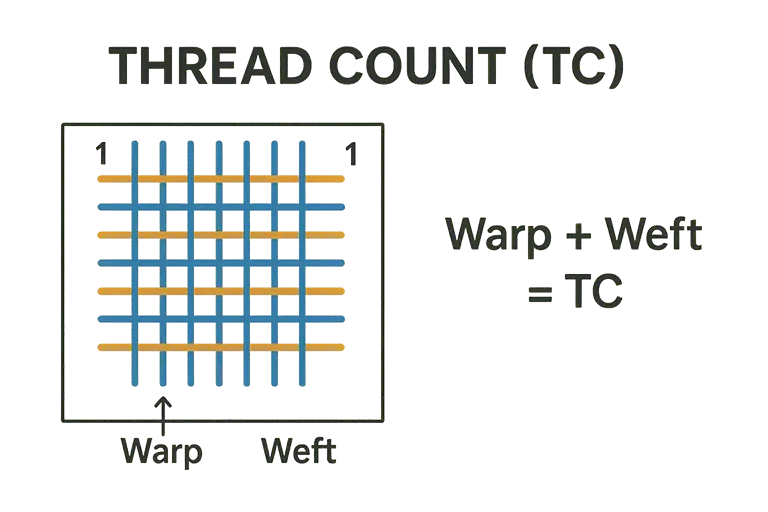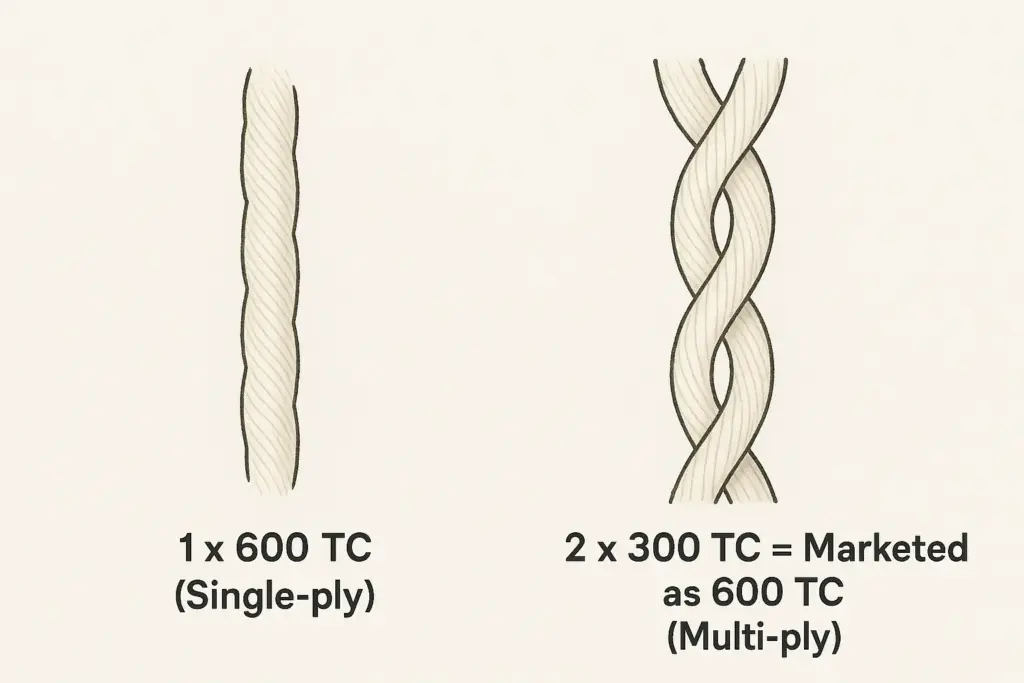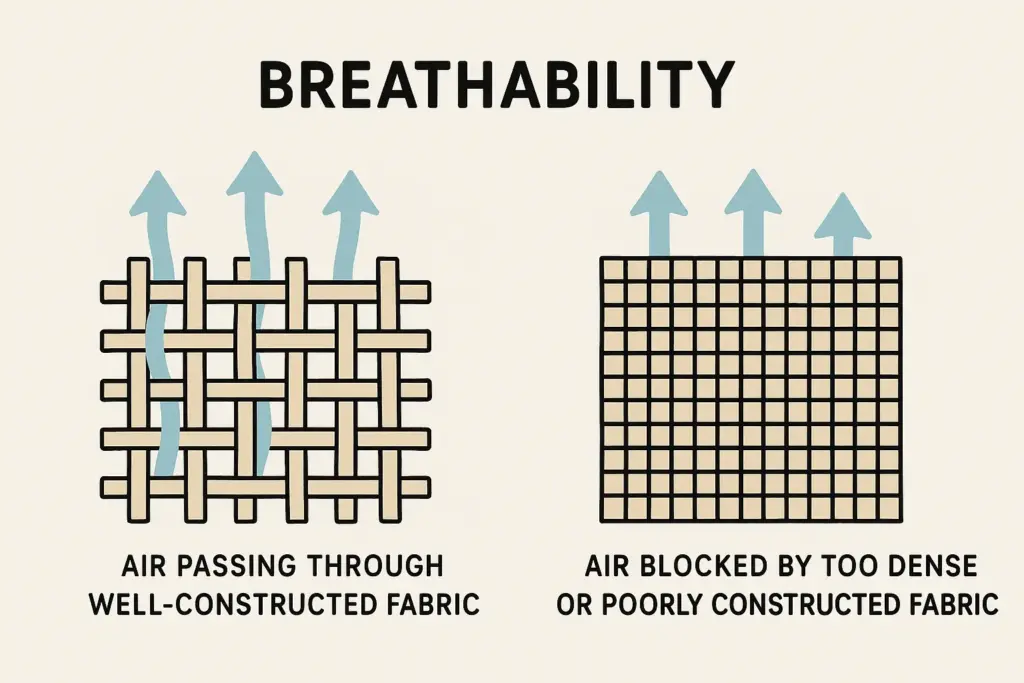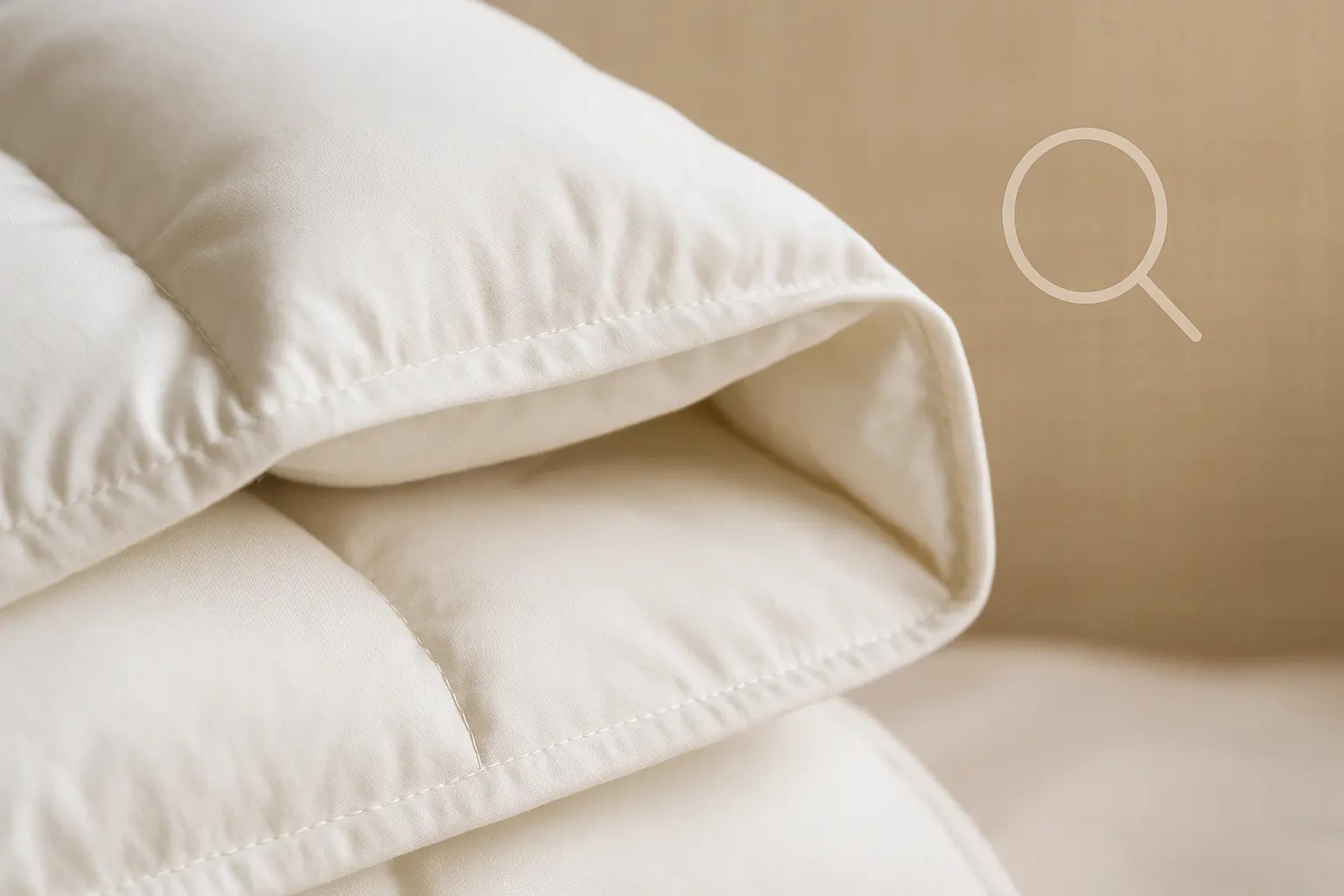When shopping for a down duvet, “TC” or “Thread Count” is a term you’ll often see. While thread count is an important indicator of fabric quality, it’s not the only factor that determines the comfort and performance of your duvet. In this article, we’ll take a closer look at what thread count really means, its relationship with softness and breathability, and other key factors like yarn quality, ply, and weave.
What is Thread Count (TC)?
Thread count refers to the number of threads woven together in one square inch of fabric, including both the lengthwise (warp) and widthwise (weft) threads. A higher thread count generally means a denser fabric, but it’s only one piece of the puzzle.

The Truth About Thread Count and Softness
Many believe that a higher thread count always means a softer, better-quality fabric. While it’s true that higher TC fabrics can feel smoother, this is not an absolute rule. The actual softness and luxury of a duvet cover or shell depend on several factors:
- Yarn Quality: Fabrics made with long-staple cotton (such as Egyptian or Pima cotton) are naturally softer, stronger, and more durable—even at moderate thread counts.
- Ply (Single vs. Multi-Ply Yarns): Some manufacturers use multiple thinner, lower-quality yarns twisted together (multi-ply) to artificially inflate the thread count. For example, a 2-ply yarn woven at 300TC may be marketed as 600TC, but it doesn’t guarantee better quality or softness. In fact, multi-ply fabrics can feel heavier, rougher, and less breathable compared to high-quality single-ply fabrics.
- Weave Type: The way the fabric is woven also affects its feel and performance.
Key Point: Thread count is only one indicator of softness—yarn quality, ply, and weave are just as important. High-quality, single-ply, long-staple cotton can feel luxuriously soft even at a moderate TC.

Understanding Ply: Don’t Be Misled by High Numbers
Be cautious when you see extremely high thread counts (400+). Sometimes, these are achieved by using multi-ply yarns, which inflate the TC number without truly improving the fabric’s quality. Always check whether the fabric is single-ply or multi-ply—single-ply is generally considered superior for softness, durability, and breathability.
Breathability: Why “More” Isn’t Always “Better”
While higher TC fabrics are denser and better at containing down, excessively high thread counts (especially with multi-ply yarns or tightly woven sateen weaves) can reduce air circulation. This means the fabric may trap heat and moisture, making the duvet feel stuffy or too warm for some sleepers.
However, high-quality single-ply cotton fabrics in the 400–600TC range (especially with sateen weave) can still offer both softness and adequate breathability. The key is to balance density and airflow for optimal comfort.

The Importance of Weave: Percale vs. Sateen
The weave of the fabric plays a significant role in its feel and performance, sometimes even more than thread count:
- Percale Weave: A simple “one-over-one-under” weave, resulting in a crisp, matte finish. Percale is cool, lightweight, and highly breathable.
- Sateen Weave: A “three or four-over, one-under” weave, creating a smooth, lustrous, and silkier surface. Sateen is softer and warmer, with a bit more weight and less breathability compared to percale.
Tip: Even with the same thread count, percale and sateen will feel and perform differently. Choose the weave based on your personal preference for feel and warmth.
Choosing the Right Thread Count: The Value of Moderation
For most people, a thread count between 250 and 500—combined with high-quality, single-ply, long-staple cotton and a suitable weave—is the sweet spot. This range offers a great balance of softness, durability, breathability, and down-proofing.
Overly high thread counts (especially those above 600TC) are often unnecessary and may actually compromise comfort by reducing breathability. Focus on quality over quantity: premium materials and construction matter more than just a high TC number.
Final Thoughts
- Thread count is important, but not everything. Yarn quality, ply, and weave type are equally crucial for comfort and performance.
- Beware of inflated TC numbers. Multi-ply yarns can artificially raise the TC without improving quality.
- Choose a moderate, high-quality TC. For most, 250–500TC with single-ply, long-staple cotton and your preferred weave (percale for crispness and coolness, sateen for silkiness and warmth) is ideal.
- Don’t chase the highest TC. A well-made, moderate TC duvet cover will almost always outperform an ultra-high TC product made with lower-quality materials.
By understanding these factors, you can make a smarter, more satisfying choice when selecting your next down duvet.


Leave a Reply